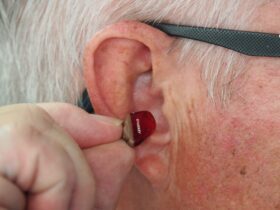Caring for a Paralyzed Rat: A Guide to Providing Compassionate Support
If you’ve recently found yourself in the position of caring for a paralyzed rat, it’s natural to feel overwhelmed. However, with the right knowledge and resources, you can provide your little friend with the love and support they need to thrive. In this comprehensive guide, we will explore the best practices and tips for taking care of a paralyzed rat, ensuring that they live a comfortable and fulfilled life.
Understanding Paralysis in Rats
Before diving into the specific ways to care for a paralyzed rat, it’s important to understand the underlying causes and implications of paralysis in these furry creatures. By getting a clearer picture of the condition, you will be better equipped to provide the appropriate care and support.
What Causes Paralysis in Rats?
Surprisingly, rats can become paralyzed due to a variety of reasons, including spinal injuries, strokes, tumors, or even genetic predispositions. It’s essential to work with a vet to determine the root cause of your rat’s paralysis, as this will guide the course of treatment and care.
Surprising Statistics:
Did you know that approximately 5% of pet rats may experience some form of paralysis during their lifetime? This surprising statistic underscores the importance of understanding and addressing the needs of paralyzed rats.
Meeting the Physical Needs of Your Paralyzed Rat
Now that we’ve delved into the reasons behind rat paralysis, let’s shift our focus to the practical steps you can take to meet your pet’s physical needs.
Creating a Comfortable Living Environment
When caring for a paralyzed rat, it’s crucial to provide them with a safe and comfortable living space. Consider using soft bedding to prevent pressure sores and ensure easy access to food, water, and their favorite toys. Additionally, placing ramps or platforms in their enclosure can facilitate movement and mental stimulation.
Assisting with Mobility
Given their limited mobility, paralyzed rats will benefit from gentle physical assistance. This might involve helping them change positions, offering support during feeding, and providing gentle massages to promote circulation and prevent muscle atrophy.
Supporting Mental Wellbeing
In addition to addressing their physical needs, it’s equally important to prioritize the mental and emotional wellbeing of paralyzed rats. These social creatures thrive on interaction, and there are several strategies to ensure they remain engaged and happy.
Encouraging Socialization
Even if your rat’s mobility is compromised, they can still benefit from social interaction. Consider introducing them to a compatible cagemate or spending quality time with them through gentle handling and bonding activities.
Mental Stimulation
Engaging your paralyzed rat in mental stimulation activities is vital for preventing boredom and depression. This can be as simple as providing new toys, introducing varied textures for exploration, or playing soothing music to create a calming environment.
How to Apply This in Your Daily Life
Now that you have a better understanding of caring for a paralyzed rat, here are some practical ways to apply this knowledge in your daily routine:
– Create an Accessible Habitat: Ensure that your rat’s living space is equipped with ramps, soft bedding, and easy access to essentials.
– Physical Interaction: Schedule regular times for gentle handling, massages, and physical assistance to support your rat’s mobility and comfort.
– Engagement and Enrichment: Dedicate time each day to interact with your rat, introduce new toys, and create a stimulating environment.
In Summary
Caring for a paralyzed rat is a compassionate and rewarding undertaking. By understanding their unique needs, creating a supportive environment, and prioritizing their physical and mental wellbeing, you can make a meaningful difference in their quality of life. With patience, love, and the right strategies, you can ensure that your paralyzed rat continues to live a happy and fulfilling life.












